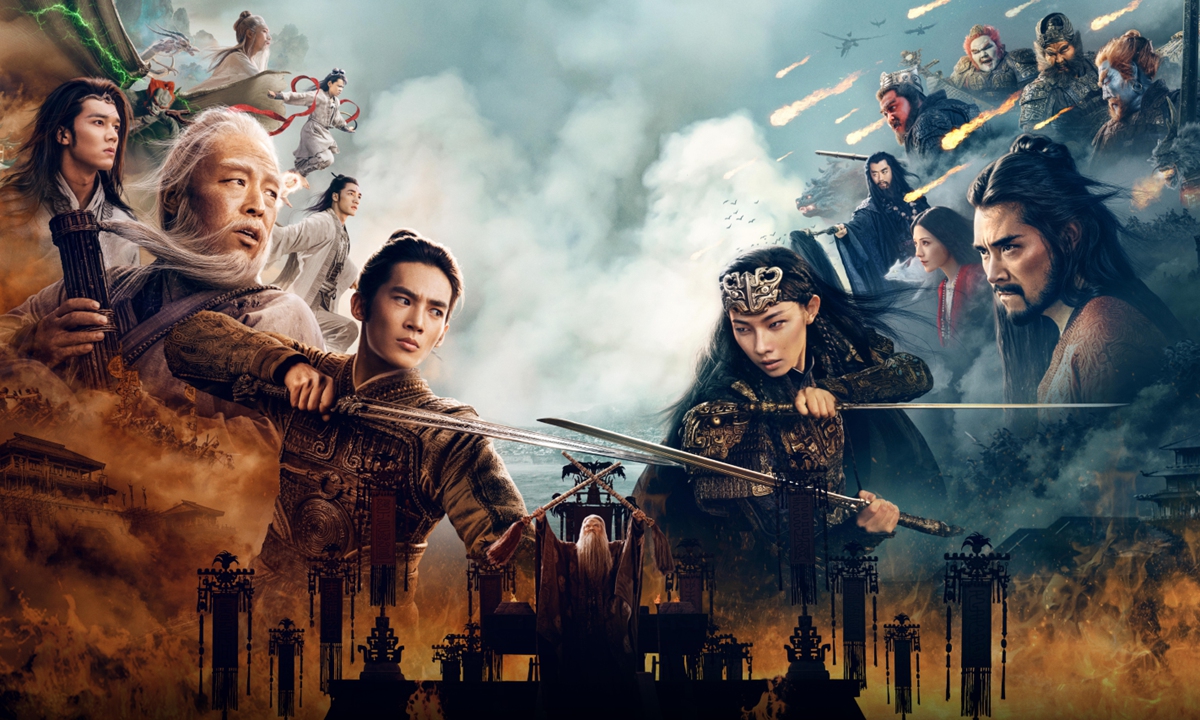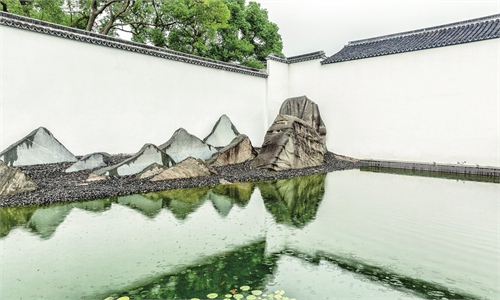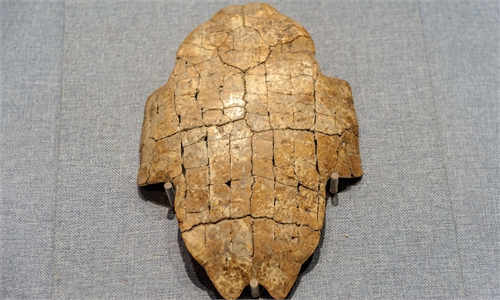ARTS / CULTURE & LEISURE
Myth and history: Archaeologists unravel fact and fiction behind ‘Creation of the Gods II’

Promotional material for Creation of the Gods II: Demon Force Photo: Courtesy of Douban
The film, adapted from the Ming Dynasty (1368-1644) novel Fengshen Yanyi, or The Investiture of the Gods, is rich with elements from the Shang Dynasty, including the distinctive bronze ware, jade artifacts, and oracle bones unearthed across Henan. These ancient relics, with their unique craftsmanship and the stories they tell, have inspired the film's art design and character creation.
The museum visit thus became an extension of the cinematic experience, allowing audiences to deepen their understanding and appreciation of the traditional culture inherent in the film's fantastical narrative.
But what was the real Shang Dynasty like? How do archaeologists view the balance between historical accuracy and cinematic adaptation?
Historical basis
Tang Jigen, former head of the archaeological team who spent 27 years excavating the renowned Yin Ruins - the first documented late Shang Dynasty capital site - in Anyang, Henan Province, told the Global Times that while the film's details may not stand up to rigorous historical scrutiny, many of its characters do have some basis in history.
For instance, the film's depiction of King Yin Shou is based on the historical King Zhou of Shang Dynasty, who, according to ancient texts, was beheaded by King Wu of the Zhou Dynasty (1046BC-771BC), his head displayed on a banner.
The character Daji, the concubine of Yin Shou, possessed by a fox spirit, remains a mystery. However, historical references do exist. Sima Qian, the ancient historian, mentioned her, and the character "fu" (woman) does appear in oracle bone inscriptions and bronze ware. One bronze vessel records the story of a Shang king and a "fu" enjoying music and alcohol together.
Liu Haiwang, head of the Henan provincial institute of cultural relics and archaeology, explained that myths often reflect historical realities, even if they cannot be taken as literal history.
For example, the film's depiction of "human sacrifice" scenes echoes archaeological findings. The Yin Ruins have yielded numerous human bones, indicating the Shang Dynasty's practice of human sacrifice.
Lei Xingshan, president of Beijing Union University and an archaeologist, told the Global Times that human sacrifice was a common practice in Shang royal and noble tombs, sometimes involving over a hundred individuals.
Human bones are frequently found in Shang Dynasty refuse pits and ditches. Oracle bone inscriptions also record such practices, and even some unearthed bronze vessels have been found to contain cooked human heads.
In stark contrast, he said, archaeological remains from the Zhou Dynasty show a different attitude toward the dead, with proper burials and no human bones in refuse pits. This highlights the Zhou's "reverence for heaven and protection of the people" as a more humane philosophy, suggesting that the fall of the Shang Dynasty was an inevitable historical outcome.
The archaeologists emphasized the big influence of the Shang Dynasty in Chinese history.
"The Shang Dynasty was the peak of China's bronze civilization, with exquisitely crafted and diverse bronze ware that reflects the highly developed handicraft industry of the time," Liu noted. He further explained that the Shang Dynasty's influence exceeded that of the Erlitou culture, which is associated with the Xia civilization.
In addition to bronze ware, the discovery of oracle bone inscriptions has provided invaluable material for studying Shang history. These inscriptions, which record the Shang kings' divinations, cover various aspects of society, including politics, the economy, the military, and culture, and are the most direct sources for understanding the Shang era, Lei echoed.
Archaeologists agree that the release of the Creation of the Gods series has given audiences a more direct understanding of the history, culture, and customs of the Shang Dynasty period.
Balancing truth and filmmaking
However, if judged by historical accuracy, the film could be further improved. They hope that, if possible, filmmakers will create works based entirely on archaeological research findings, both showcasing archaeological achievements and restoring the true past.
"If someone becomes interested in real history through watching films, that's when scholars like us can step in. The academic community can introduce real history in appropriate ways and guide people to approach history with a serious attitude," Tang said.
Yet, considering that Creation of the Gods is based on mythological themes, he pointed out that a tolerant and understanding attitude toward such films is necessary as it shows the respect of imagination of ancient Chinese people.
Huang Fucheng, a research fellow at the Zhengzhou municipal institute of cultural heritage and archaeology, told the Global Times that myths themselves are a crystallization of ancient thoughts and wisdom, representing another side of history.
"Ancient myths hold boundless imaginative potential in the Chinese psyche and should not be confined by specific historical or archaeological details," he said.
The archaeologists also suggest that the story of historical figure Fu Hao, a talented female general and queen to King Wuding of the Shang Dynasty, is worth telling in the form of film.
In Creation of the Gods II: Demon Force, the character Deng Chanyu in the film is also inspired by her.
According to Lei, the oracle bone inscriptions recorded that Fu Hao frequently led military campaigns and commanded the largest number of captives in Shang history. Unlike other Shang female tombs, which do not contain weapons, Fu Hao's tomb was decked with weapons, including the bronze battle-axes typical of military leaders. Fu Hao is thus considered the most capable general recorded in oracle bone inscriptions.
"If possible, I am willing to provide historical assistance to present the true history of the Shang Dynasty in film form," Tang said.




